Tradition in contemporary art / Tradición en el arte contemporáneo
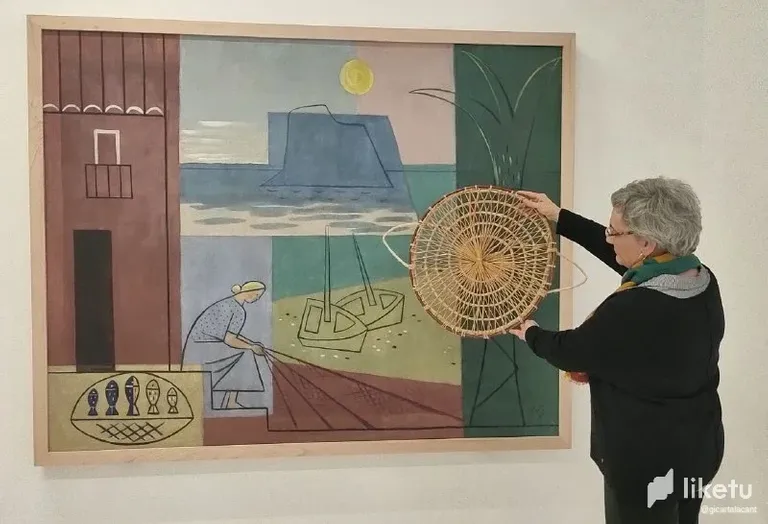
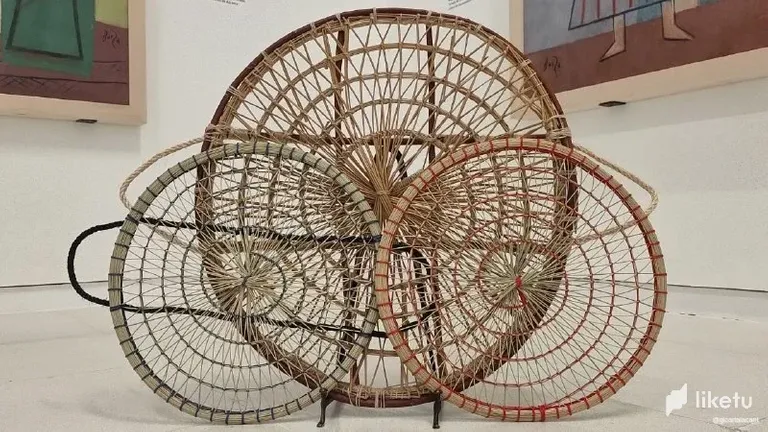
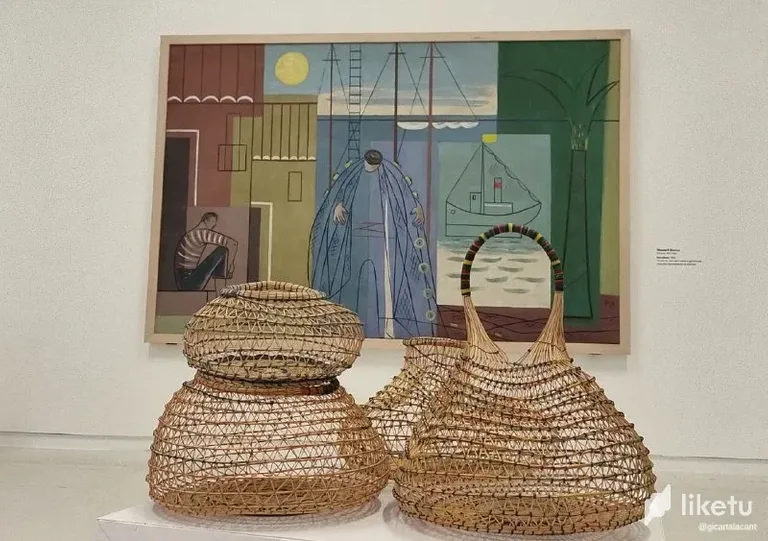

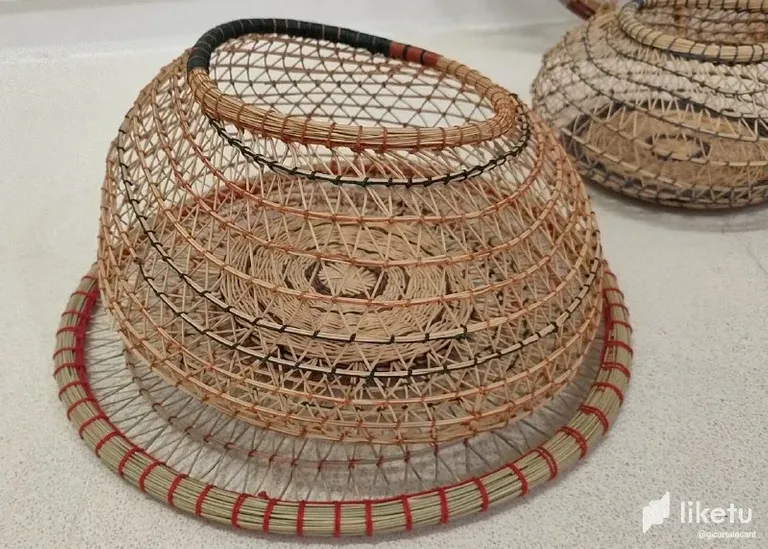
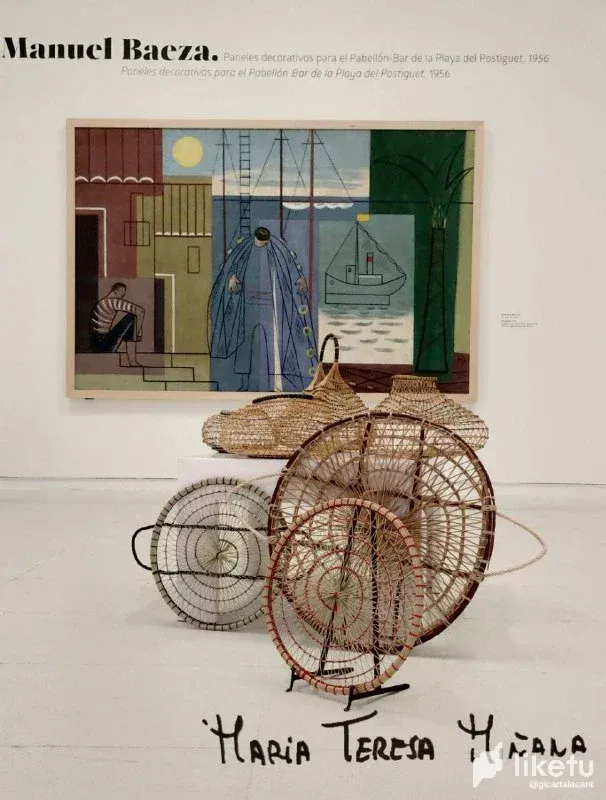
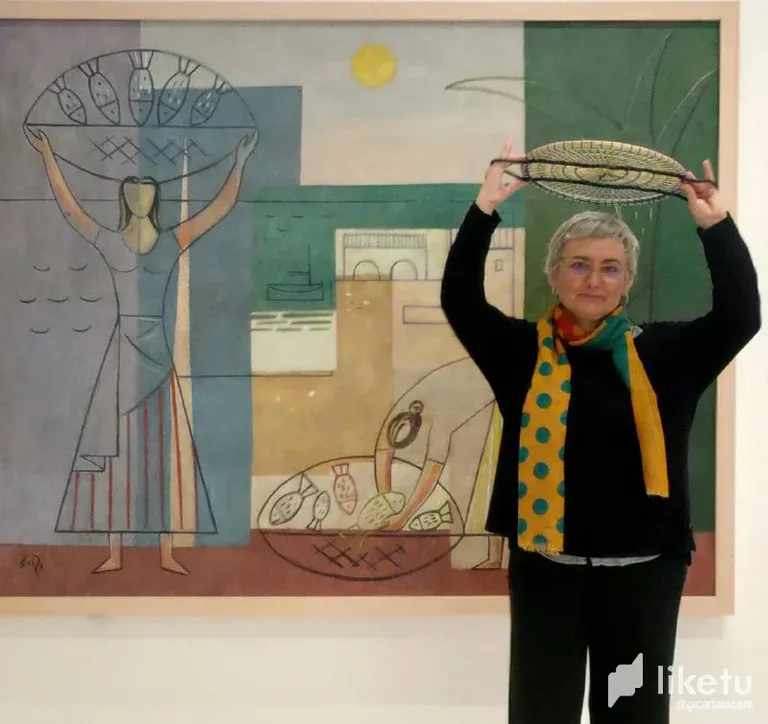
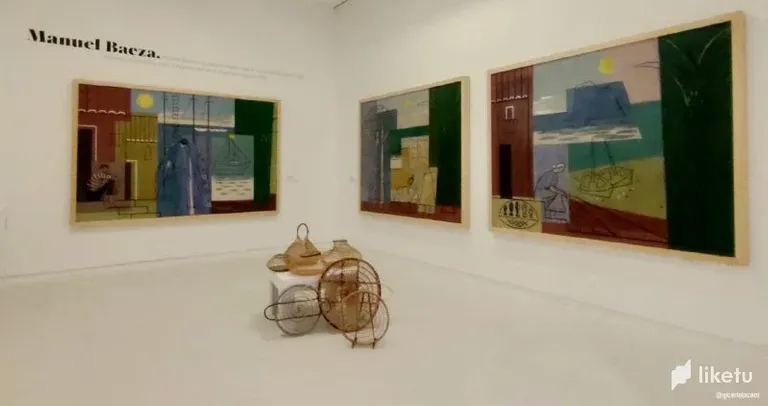
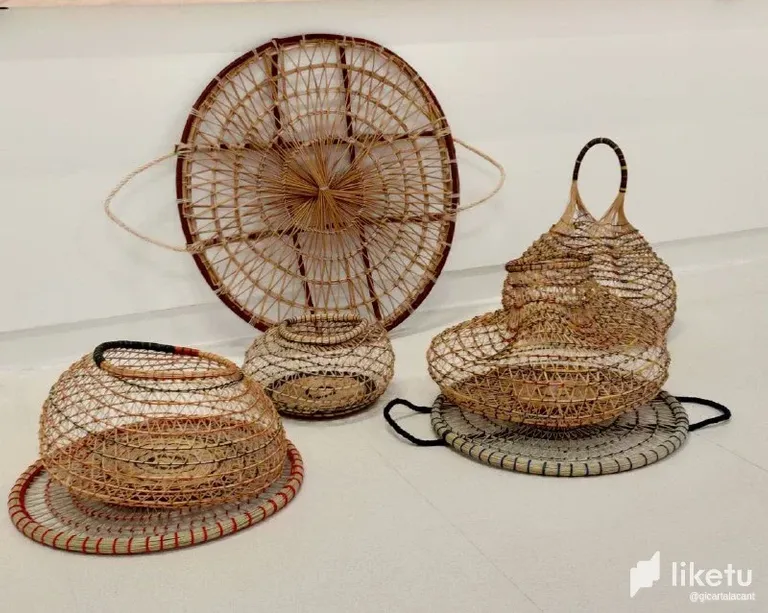
Alicante, doomed to the sea by its geographical configuration, is a deeply seafaring land where we can find basketry constructions in the fishing gear as nanses, mornells, bornells, sarandes, paneras. All made with vegetable elements such as reed, esparto grass, cane and made with a unique craft technique: knotted triangular mesh basketry.
Saranda: flat basket to carry fish. Made with the technique of knotted triangular mesh.
We find witness of this typical construction of Alicante in several works of Alicante artists as in the photographs of the beginning of the 20th century of Andrés Fabert, in the paintings of Manuel Baeza, 1956, and in the trencadisos of Adrián Carrillo.
Our thanks to Rosa María Castell, director of the MACA (Museum of Contemporary Art of Alicante), for opening the doors of the museum especially to exhibit the works of Maria Teresa Miñana and to take these photographs.
Alicante , abocado al #mar por su configuración geográfica, es una tierra profundamente marinera donde podemos encontrar construcciones de cestería en las artes de pesca como nanses, mornells, bornells, sarandes, paneras. Todos hechos con elementos vegetales como junco, esparto, caña y realizadas con una técnica artesanal singular: la cestería de malla triangular anudada.
Saranda: cesta plana para llevar el pescado. Realizada con la técnica de malla triangular anudada.
Encontramos testigo de esta construcción típica de Alicante en varias obras de artistas alicantinos como en las fotografías de principio del siglo XX de Andrés Fabert, en las pinturas de Manuel Baeza ,1956, y en los trencadisos de Adrián Carrillo.
Nuestro agradecimiento a Rosa María Castell, directora del MACA (Museo de Arte Contemporáneo de Alicante), por abrir las puertas del museo especialmente para exponer las obras de Maria Teresa Miñana y hacer estas fotografías.
For the best experience view this post on Liketu
https://twitter.com/1088494312072101888/status/1615060430103232512
The rewards earned on this comment will go directly to the people sharing the post on Twitter as long as they are registered with @poshtoken. Sign up at https://hiveposh.com.